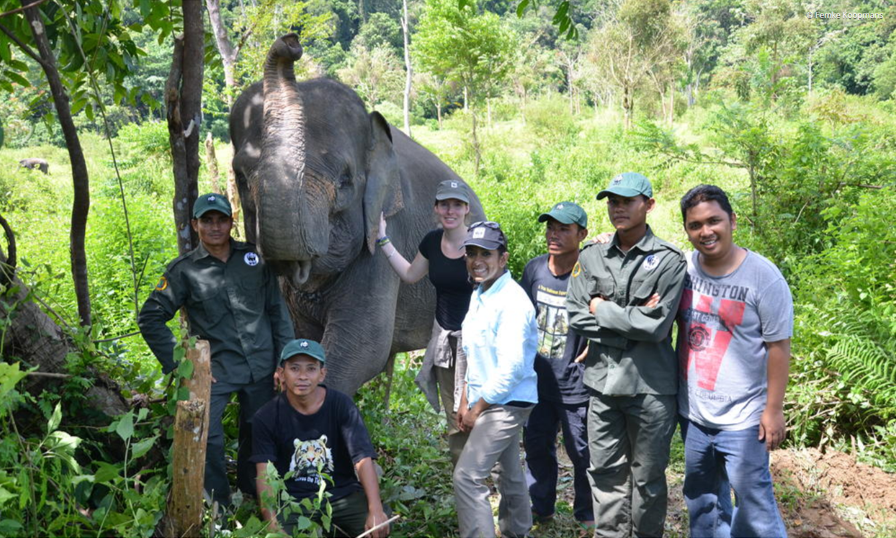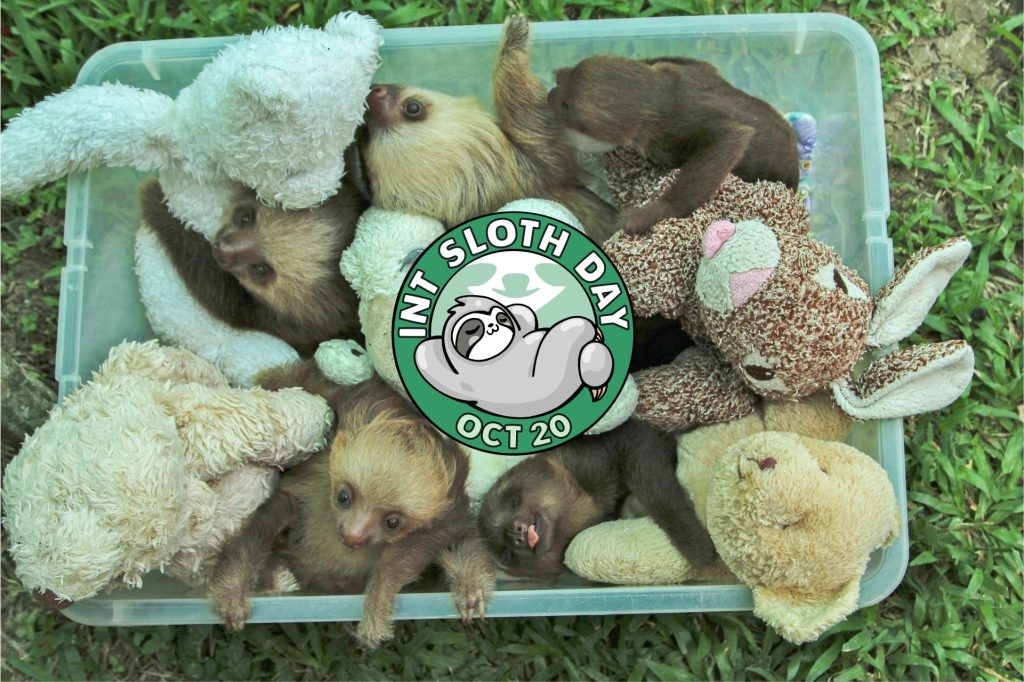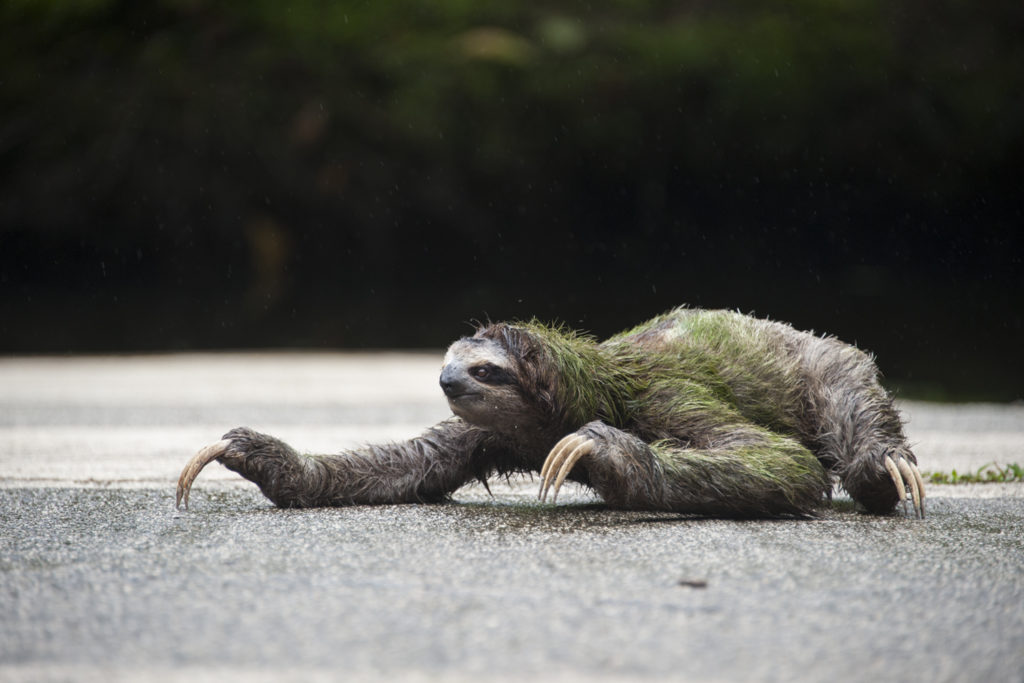Celebrating Female Conservationists – International Women’s Day
International Women’s Day is a yearly opportunity to celebrate women and their achievements, reflect on the progress made towards female empowerment, and continue to raise awareness to improve the lives of women globally. But it is not just a day about women. It is truly a day about recognizing the strength that comes from inclusion, drawing from the experiences, knowledge and perspectives of all people in society.
Community-based conservation is now recognized by many leading conservation organizations as the most effective method to ensure the long-term health of communities and ecosystems. At it’s core, community-based conservation aims to preserve ecosystems and their resources for future generations by including all people, particularly the most marginalized.

In addition to being among the most marginalized in society, women are also disproportionately affected by changes to the environment. As the water-collectors, the fire-makers, and the food-givers, they interact with the environment on a daily basis and therefore are closely in tune to its changes. As such, they have many stories to tell.
So to honor these women working on the ground, leading the charge for conservation and their communities, here are some inspiring stories in their own words from female conservationists around the world.
Mya Nwe: Myanmar

As the WWF Forests Program Manager in Myanmar, Mya Nwe works on launching conservation programs to protect the country’s rich natural resources and ecosystems.
“I grew up in Myanmar, which is now the second most vulnerable country in the world to climate change. I vividly experienced the Cyclone Nargis, which killed more than 100,000 people, and the aftermath it left behind. If Nargis is a sign of more intense storms to come due to climate change, I want to contribute to a more resilient future for my country. Without well-managed forests and arable land, the food we eat, the water we drink, as well as the protection we need against natural disasters are threatened.”
“Understanding some of these challenges firsthand have made me realize the importance of balancing growth and conservation. Like the rest of the region, Myanmar is at crossroads and undergoing a lot of pressure for development after 50 years of isolation with large foreign investments pouring in. In this time of historic change, I consider it to be my life’s calling to help shape my country’s economic and environmental future.”
Nwe, Mya. “Celebrating women in conservation: Mya Nwe.” WWF, https://www.worldwildlife.org/pages/celebrating-women-in-conservation-mya-nwe
Sidonie Asseme: Cameroon

As a park ranger in the forests of Cameroon, Sidonie Asseme has witnessed and experienced many unspeakable types of violence firsthand. Even going through training was an arduous process: “‘We went through a very challenging training,’ says Asseme. ‘There were times I felt like giving up, but that omniscient voice kept urging me to go on.'”
Thanks to the tireless efforts of her and her peers, they have detained 15 ivory poachers and continue to protect a variety of endangered species threatened by wildlife trade on the black market. As one of the few female rangers in the world, her bravery and tenacity in a male-dominated field certainly deserves to be celebrated.
“I was born in the forest and I feel a moral obligation to protect it and its wildlife, for humanity and for my kids…I hope to continue working as a game ranger for a long time. I love wearing this uniform.”
Ruggiero, Sarah. “Despite Danger, Cameroonian Ranger Asseme Still Dedicated to Her Calling.” WWF, https://www.worldwildlife.org/stories/despite-danger-cameroonian-ranger-asseme-still-dedicated-to-her-calling
Nilanga Jayasinghe: Sri Lanka

As a Program Officer for Wildlife Conservation for WWF, Nilanga Jayasinghe oversees teams and partners in over 15 countries throughout Asia, helping to preserve Asian elephants, rhinos, tigers and snow leopards.
“I grew up in Sri Lanka where, over time, the sociable, intelligent hulks wove their way into my heart. Asian elephants are not only the engineers of the ecosystems they live in; they are also deeply intertwined with the history and culture of countries like Sri Lanka.”
“I am passionate about elephants. Conserving them and other species we share this world with is something I consider to be my life’s work.”
“The key thing to remember is that there’s no silver bullet for mediating human-elephant conflict. We must consider a variety of components like tools, technologies and techniques, engaging local stakeholders to resolve issues and ensuring better land-use planning, among others, to prevent and mitigate this conflict.”
Jayasinghe, Nilanga. “Learning to Live in Harmony with Asian Elephants.” WWF, https://www.worldwildlife.org/stories/learning-to-live-in-harmony-with-asian-elephants
Vanessa Cárdenas: United States

Vanessa Cárdenas is the director of WWF’s Latino outreach program in the United States. Like many life-long conservationists, she grew up playing outdoors.
“My best childhood memories are spending time outdoors. By US standards we were poor, but we were rich in nature. I spent countless hours atop a fig tree in my grandma’s yard, balancing on its vigorous branches to pluck the velvety fruit. Once I had my fill, I exchanged them with plumbs or apples from my neighbor’s yard. When not eating fruit, I was taking rhinoceros beetles off our corn plants or collecting roses from the yard. Walking to school meant crisscrossing lettuce, onions and potato fields and jumping over creeks lined with calla lily flowers.”
“Years later I found myself living in a suburb of Washington, DC. The apartment complex where my immigrant family lived included rows and rows of buildings which looked exactly the same, surrounded by concrete parking lots. The few trees around were not for climbing; the patches of green grass had warning signs to keep off them; and the most succulent fruits were usually found at grocery stores we couldn’t afford.”
“What does that have to do with my work today? Nowadays nature and its bounty have become a privilege for some while others are being displaced, getting sick, and losing jobs due to environmental degradation and contamination.”
“US Latinos, by virtue of their deep connections to the land and their countries of origin understand the threats we face as our natural resources are depleted globally. I am thankful for the childhood that I had. While I did not possess material things, I was able to grow healthy and free. Every kid deserves the same, regardless of where they live.”
Cárdenas, Vanessa. “Celebrating women in conservation: Vanessa Cárdenas.” WWF, https://www.worldwildlife.org/pages/celebrating-women-in-conservation-vanessa-cardenas
Devi KC: Nepal

Devi KC is from Khata, a region sandwiched between Nepal and India where the densest population of tigers live alongside one-horned rhinos and elephants. Like many people in her community, she relies upon the forest to provide essential resources for her family.
“From the time I get up in the morning until about 10 at night, I am connected with nature. Me and nature—we have a good relationship.”
As a community health volunteer, she understands firsthand the connection between the welfare of people and their environment. She works every day to improve the health of community members and the environment, forging a more sustainable future for Khata.
“I want my friends and family to live long lives…If people are not healthy, they won’t have the energy for things like protecting the environment. I do not get money for doing any of this, but it gives me great satisfaction. I know people in my village appreciate it.”
Schwartz, Jill. “Life in Nepal: How a Tiny, Mountainous Country Became One of the World’s Biggest Conservation Successes for Wildlife – And for Rural Communities With Pressing Health Needs.” WWF, https://www.worldwildlife.org/magazine/issues/winter-2014/articles/life-in-nepal
Gaura Devi and the women of the Chipko movement: India

Women such Gaura Devi formed the backbone of the Chipko forest movement (1973) in the Himalayas, which inspired non-violent protests and eco-feminism movements around the world. Their motto, “Our bodies before our trees” was often put into practice by the women who stood in front of trees to save them from loggers. In Hindu, “Chipko” means “to hug,” making these women the most significant “tree-huggers” in modern history.

The movement came to a head in 1975, when the Indian Government auctioned off 2,500 trees in the Reni forest, an area overlooking the river which had suffered a devastating flood and landslide only five years before.
Aware of the imminent floods that would occur if the area was cut, Gaura Devi and other brave women intervened. At one point Guara Devi confronted one of the loggers, demanding that he shoot her instead of cutting down the forest, a place she called her “maika” or “her mother’s home.”
Thanks to their valiant efforts, the loggers were scared off and the Indian government banned all logging in Reni for a period of 10 years, protecting over 1150 square kilometers of forest. This ban was eventually extended for an additional 10 years in 1985.

Although sloths may be the original tree-huggers, it is thanks to the historic and continued efforts of these trailblazing women that we can benefit from healthy ecosystems and communities to this day. Here’s hoping many more activists follow in their footsteps as women continue to become a more integral part in the management of our planet’s precious resources.
- Want to learn about other courageous female activists? Read more here.









